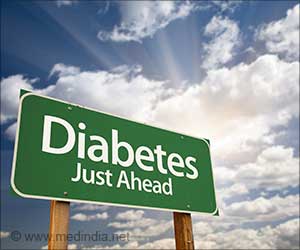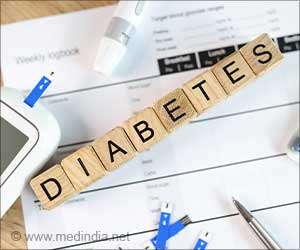Tirzepatide and other new medications are gaining popularity for weight loss and diabetes, while traditional treatments like metformin and insulin decline.

Trends in Utilization of Glucose- and Weight-Lowering Medications After Tirzepatide Approval in the United States: A Population-Based Cohort Study
Go to source).
‘Did You Know?
The number of patients with obesity but no diabetes using GLP-1RA treatment in the U.S. skyrocketed by over 700%, jumping from 21,000 in 2019 to more than 174,000 in 2023! #medindia #glp1ra #obesitytreatment #weightloss’





The number of patients with obesity but no diabetes using GLP-1RA treatment in the U.S. skyrocketed by over 700%, jumping from 21,000 in 2019 to more than 174,000 in 2023! #medindia #glp1ra #obesitytreatment #weightloss’
Advertisement
Evolving Prescribing Patterns for Diabetes and Obesity
“Taken together, these findings highlight the rapidly shifting landscape of prescribing patterns for glucose-lowering and weight-lowering medications,” said lead author John W. Ostrominski, M.D., of the Cardiovascular Division, Division of Endocrinology, Diabetes and Hypertension, and Division of Pharmacoepidemiology and Pharmacoeconomics at Brigham and Women’s Hospital, a founding member of the Mass General Brigham healthcare system. “These changing trends likely reflect the combination of new evidence, increased awareness and prioritization of obesity treatment, and changing guidance for how to help patients manage these conditions.”The study, which was funded by the National Institute of Diabetes and Digestive and Kidney Diseases, examined claims data among people with commercial insurance. The researchers report that in January 2021, approximately half of the weight-lowering medications initiated by people without diabetes were GLP-1RA-based medications such as semaglutide and tirzepatide. By December 2023, this percentage increased to nearly 90%, with tirzepatide being the most commonly started (31%). Use of other weight loss medications, such as phentermine and liraglutide, declined.
Advertisement
Increased Initiation of GLP-1 Receptor Agonists
Among people with type 2 diabetes, 13% started GLP-1RA-based medications in January 2021. That rate rose to 35% by December 2023. Metformin, the most commonly started glucose-lowering medication in January 2021 (30%), declined to 19% by December 2023.When the authors compared the immediate post-approval uptake of tirzepatide to other medications recently approved for type 2 diabetes or obesity, they found that the rise in tirzepatide’s use was steeper and more sustained.
Rapid Growth in Tirzepatide Prescriptions
“We saw a sharp uptake of tirzepatide after regulatory approval—these kinds of trends are important for patients, clinicians, researchers, and policymakers to be aware of,” said Ostrominski. “The rapidly expanding uptake of tirzepatide and GLP-1RA underscores the need for clinicians to become more familiar with their use, for researchers to improve understanding of their long-term effects, and for health policy that promotes sustained access and affordability.”The researchers note several limitations to the work, including that it is uncertain whether the findings from commercially insured U.S. adults are generalizable to other populations and countries.
“Importantly, we don’t yet have long-term data from outcomes trials for tirzepatide as we do for GLP-1RA, but preliminary data are reassuring,” said Ostrominski. “In the future, data comparing the benefits of tirzepatide versus semaglutide for glycemic control, obesity management, and cardiovascular outcomes will help us have more informed conversations with patients about choosing the medication that’s right for them.”
Reference:
- Trends in Utilization of Glucose- and Weight-Lowering Medications After Tirzepatide Approval in the United States: A Population-Based Cohort Study - (https://www.acpjournals.org/doi/10.7326/ANNALS-24-02870)
Source-Eurekalert















